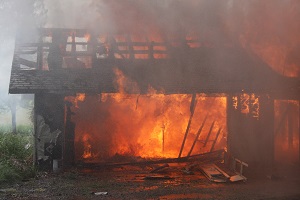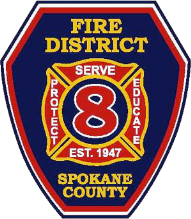Keeping Your Family Safe From Fire
- Do you have smoke alarms installed on every level of your home?
- Is there an alarm outside every sleeping area?
- Do your smoke alarms work? Do you test them once a month and replace batteries at least twice a year?
- Does everyone in your home know the sound of your smoke alarm?
- Are any smoke alarms in your home more than 10 years old? If so, replace them.
- Do you have a carbon monoxide (CO) alarm?
- Does your family have a home fire escape plan, and do you practice it every six months?
- Are your portable fire extinguisher fully charged?
- Is your stove top clean – no grease, no spills, no clutter?
- When you cook, do you turn pot handles in toward the back of the stove?
- Are space heaters at least 3 feet away from walls, sofas and anything else that can burn?
- Has your chimney been inspected or cleaned in the past 12 months?
- If you have a fireplace, does it have a sturdy screen to catch sparks?
- Has your heating system been professionally inspected or serviced in the past 12 months?
- Are matches and lighters locked up high, out of sight and reach?
- If anyone smokes in your home, do you have large, deep, non-tip, non-combustible ashtrays?
- Are cigarette and cigar butts and ashes soaked with water before throwing them away?
- Are paints, gasoline, and other flammable liquids stored away from flames and sparks?
- Is gasoline stored outside the home in a separate shed or garage?
- Is your storage area clean, no oily rags, used paint, or varnish rags?
- Do the tripping points of your fuses or breakers match the capacity of the circuits they protect? Have them inspected professionally.
- Are bathrooms and kitchen wall outlets protected by ground fault circuit interrupters (GFCIs)?
- Choose a CO alarm that has the label of a recognized testing laboratory. Install and maintain CO alarms inside your home to provide early warning of carbon monoxide.
- CO alarms should be installed in a central location outside each separate sleeping area, on every level of the home, and in other locations where required by applicable laws, codes or standards. For the best protection, have CO alarms that are interconnected throughout the home. When one sounds, they all sound.
- Follow the manufacturer’s instructions for placement, mounting height and replacement.
- Combination smoke-CO alarms must be installed in accordance with requirements for smoke alarms.
- CO alarms are not substitutes for smoke alarms and vice versa. Know the difference between the sound of smoke alarms and the sound of CO alarms.
Additional Information and Resources
National Fire Protection Association
https://www.nfpa.org/Public-Education/Teaching-tools/Safety-tip-sheets




